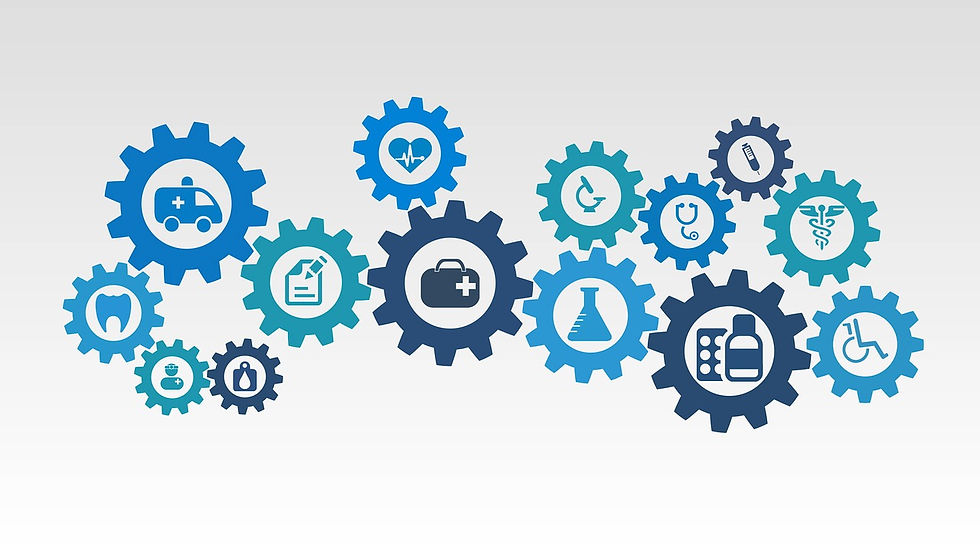Professionalism Audit
- ALeeRDH

- May 7, 2019
- 3 min read
Updated: Jul 30, 2019

What organizations are you a part of, and how are you accountable to them?
As a registered dental hygienist (RDH) in Canada I belong to the Canadian Dental Hygienist Association (CDHA). The CDHA’s (2018) mission as stated in the 2017-2018 annual report is “[to allow it’s members] to provide quality preventive and therapeutic oral health care as well as health promotion for the Canadian public” (para. 1). In addition to the CDHA, I also belong to the College of Dental Hygienists of Nova Scotia (CDHNS). The CDHNS vision statement says “[it’s members] are recognized by the public as essential health care providers... [and the CDHNS] supports an environment of interprofessional collaboration, professional advancement and equitable access to health care for all Nova Scotians.” (para. 2). The CDHNS provides specific rules and regulation for practicing dental hygiene in Nova Scotia, as scope of practice differs among provinces. Paid memberships to both of these organization are required to gain a license to practice dental hygiene in Nova Scotia. To maintain good standing, RDHs in Nova Scotia are also required to complete 45 credit hours of continuing education in a three-year cycle period. Randomized audits are performed by the CDHNS for each cycle to ensure all members are following the guidelines and keeping up with current information in the oral health field (CDHNS, n.d.-a).
Before 2009, RDHs in Nova Scotia were licensed by the Provincial Dental Board of Nova Scotia and were regulated under the Dental Act (CDHNS, n.d.-b). May 15th 2009 marked a historic day for RDHs in Nova Scotia; A course in self-initiation was released. When a Nova Scotia RDH completes the course, they are able to practice independently of a dentist (CDHA, n.d.-a). With this freedom comes greater responsibility, and therefore liability. All RDHs are required by the CDHA to have liability insurance to practice. In the event of a claim against an RDH, the CDHAs liability insurance provides “coverage for wrongful acts to a third party (i.e. actual or alleged negligent act, error or omission) committed within the scope of professional services as a dental hygienist.” (CDHA, n.d.-b). This provides protection to both RDHs and public they serve.
Dental hygiene care goes beyond the private practice setting. In many cases, a patient’s situation is better suited to an oral health professional with additional training. For example, a patient who presents with severe periodontal disease may be better treated by a periodontal hygienist and periodontist. With explanation of the situation, the patient is offered a consultation with a periodontist and their hygiene team for treatment. If the patient accepts, a referral is sent to the periodontal clinic. The patient is then managed between the two clinics depending on their needs (oral health, financial, etc.)
How do you interact with other professions?
In the past, there has been a disconnect between oral health care and overall health care. Oral health status has an impact on many systemic health issues; Cardiovascular health and Diabetes are two that are well documented. As a RDH, I am responsible in explaining the impact of poor oral health on these conditions to my patients, and teach them techniques to maintain, if not improve, their oral health. In addition to the information I provide, it is also important that I collaborate with other health care professionals for comprehensive care of my patients. For example, if I have taken a patient's blood pressure and it is significantly higher than usual, I inform the patient, ask further questions to determine the possible cause, and refer them to their family doctor or nurse practitioner for follow-up if necessary; this ensures the patient is aware of a possible health change, and that the proper health care professional addresses the issue.
Additional health professionals RDHs collaborate include but are not limited to:
pharmacists – To verify medications and dosages that may impact a patient’s dental hygiene treatment
registered massage therapists – To improve muscular function stemming from the head and neck (i.e. tight masseter muscles from clenching and grinding)
oral maxillofacial surgeons – To assess if there is a need for surgical intervention to improve a patient’s maxillofacial health and function (i.e. removal of impacted teeth, jaw realignment etc.)
ear, nose and throat specialists – To assess areas of concern noticed during intra/extra oral exam by RDH (i.e. enlarged tonsils, adenoids, etc.)
References:
Canadian Dental Hygienists Association. (2018). 2017-2018 CDHA Annual Report. Retrieved May 4, 2019, from https://www.cdha.ca/cdha/About_folder/2017-2018_Annual_Report_folder/CDHA/About/Annual_Report/Annual_Report_2017-18.aspx?hkey=c1adbcba-36c4-4916-a8ec-9b66bfa152c2
Canadian Dental Hygienists Association. (n.d.-a). Self-Initiation for Dental Hygienists Nova Scotia (disponible en Français). Retrieved May 4, 2019, from https://www.cdha.ca/cdha/Education/Online_Courses/Self-Initiation_Nova_Scotia/CDHA/Education/Courses/Self-Initiation_Nova_Scotia.aspx
Canadian Dental Hygienists Association. (n.d.-b) Professional Liability Insurance. [Brochure]. Retrieved May 4, 2019, from https://www.cdha.ca/cdha/Membership_folder/Membership_Benefits_folder/Insurance_Programs/CDHA/Membership/Benefits/Insurance_-_CDHA_Protect.aspx
College of Dental Hygienists of Nova Scotia. (n.d.-a). Continuing Competency. Retrieved May 4, 2019, from http://www.cdhns.ca/index.php/members/continuing-competency
College of Dental Hygienists of Nova Scotia. (n.d.-b). History. Retrieved May 4, 2019, from http://www.cdhns.ca/index.php/about/history



Comments